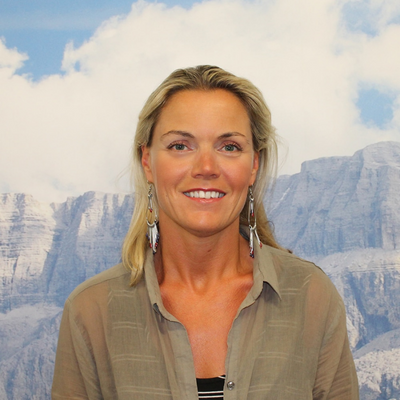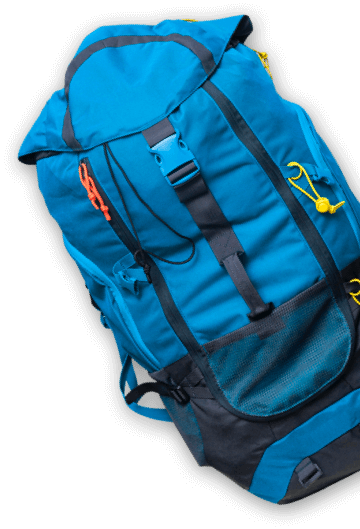23 Jan 23
Green travel – How to take care of the trails
Trail maintenance and etiquette are crucial to keeping hiking trails safe and usable, and every hiker can do their part. Here’s our green travel tips for how to help ensure our beautiful trails stay that way.
Only leave footprints
RAW Travel practices ‘leave no trace’ outdoor ethics on all our trips, aiming not only to minimise the environmental impact of our visit but also to leave a positive contribution. You will often see your leader collecting litter left by other walkers. We encourage you to bring a rubbish bag on all your hikes and remove a few pieces of litter as you go. It’ll make a real difference to the local area. Many trails have no bins. Carry all rubbish out and recycle as much of it as you can. Proper disposal of human waste is also important – to avoid pollution of water sources, avoid the negative implications of someone else finding it, minimise the possibility of spreading disease, and maximise the rate of decomposition. Before you travel, check the specific rules for the area you plan to visit.
- See also these helpful tips from Trail Hiking Australia about going to the toilet on a hike.
Clean your gear
While we have a strong ethos of ‘treading lightly’ when out in the bush, it’s easy to unwittingly spread weeds and diseases that can kill wildlife and destroy wild places. Weeds, pests and diseases are major threats to native plants and animals – and they can hitch a ride on muddy hiking boots. Before you pack, it is vital that you check, clean, disinfect or dry all clothing, boots and equipment, removing all dirt from any previous trips you’ve taken. One of the biggest threats is Phytophthora – a root rot that destroys native plants.
- The Invasive Species Council’s ‘Keep Your Gear Clean in the Wild Campaign‘ has lots of great tips about what you can do.
Report trail problems when you find them
If there’s a tree down across a trail, an eroded section or damaged signage, the trail overseer or organisation needs to know about it. There’s not endless money in trail maintenance, so individual hikers are often the eyes and ears of the organisations who go out to deal with issues. With so many areas to manage, it could take days or even weeks for trail maintenance organisations to learn about an issue without the help of trail users. Be sure to warn other hikers or trail users you run into. Review signage for who to contact at the trailhead. If there are no signs, search online for the contact information of the trail system, state or national park, forest or wilderness area, or organisation that manages that trail.
- Here’s some signs that a trail is in trouble and what to do about it.
Stay on the trail
The most important thing you can do to maintain trails and reduce your environmental impact is to stay on the trail. Going off track can widen or create new paths, unintentionally impacting local ecosystems. Surface vegetation or communities of organisms can be trampled beyond recovery. On single trails, travel in single file in the middle of the track, not on the edges. Yes, there are puddles and holes but if you walk around the edges all you end up with is a larger puddle. Getting wet or muddy is part of the experience. If you’re hiking solo or in a small group, yield to large groups of hikers, even if you technically have the right of way. It is easier for a single person to step off the trail, and it also minimises damage to flora and fauna.
- Check out this video from Parks Victoria about why it’s so important to stay on the track
Respect wildlife
Observe wild animals from a distance. Avoid disturbing them, particularly at sensitive times: mating, nesting and raising young (mostly between spring and early summer). Resist the urge to feed wild animals including birds – human foods damage their health and leave them vulnerable to predators. Walk quietly and do not pursue animals. If you find sick or injured wildlife, notify the relevant wildlife service or a park ranger.
- Here’s some frequently asked questions from Wildlife Victoria about what to do if you find a dead or injured animal.
Consider becoming a trail crew volunteer
Maintaining trails takes a lot of time, effort and hard work, and it’s a never-ending task. There’s always something that needs to be done. Crews and volunteers work tirelessly to repair and clean up trails (of every size) to ensure they are accessible, safe and enjoyable for hikers. There’s a big gap between the resources that agencies have to maintain trails and what they really need to keep trails up to standard. Volunteer trail maintenance groups are vital for helping to close that gap and keeping paths pristine. Being a volunteer is a great way to conserve our special places, and you’ll learn more about plants and wildlife!
- Here’s some info about the group looking after Victoria’s Great South West Walk – one of our favourite trails.
DID YOU KNOW?
At RAW Travel, we are committed to making the world a little better – one walk at a time. We are proud of our reputation as a leader in sustainable travel and recognise our responsibility to continuously improve, pioneer and drive change for a better planet. Every time you take a walk with us, we’ll plant a tree for you! It’s a tree in memory of a sensational, perhaps even life-changing trip. It’s also a tree for a better tomorrow as you are helping to protect our climate and restore Australia’s forests.

Written By
Samantha McCrow
Sam is an seasoned hiker and travel writer with 20+ years experience as a content and marketing specialist. She started out as a commissioning editor for Lonely Planet guidebooks and now regularly shares stories and insights about the world's most iconic and rewarding hiking trails.

